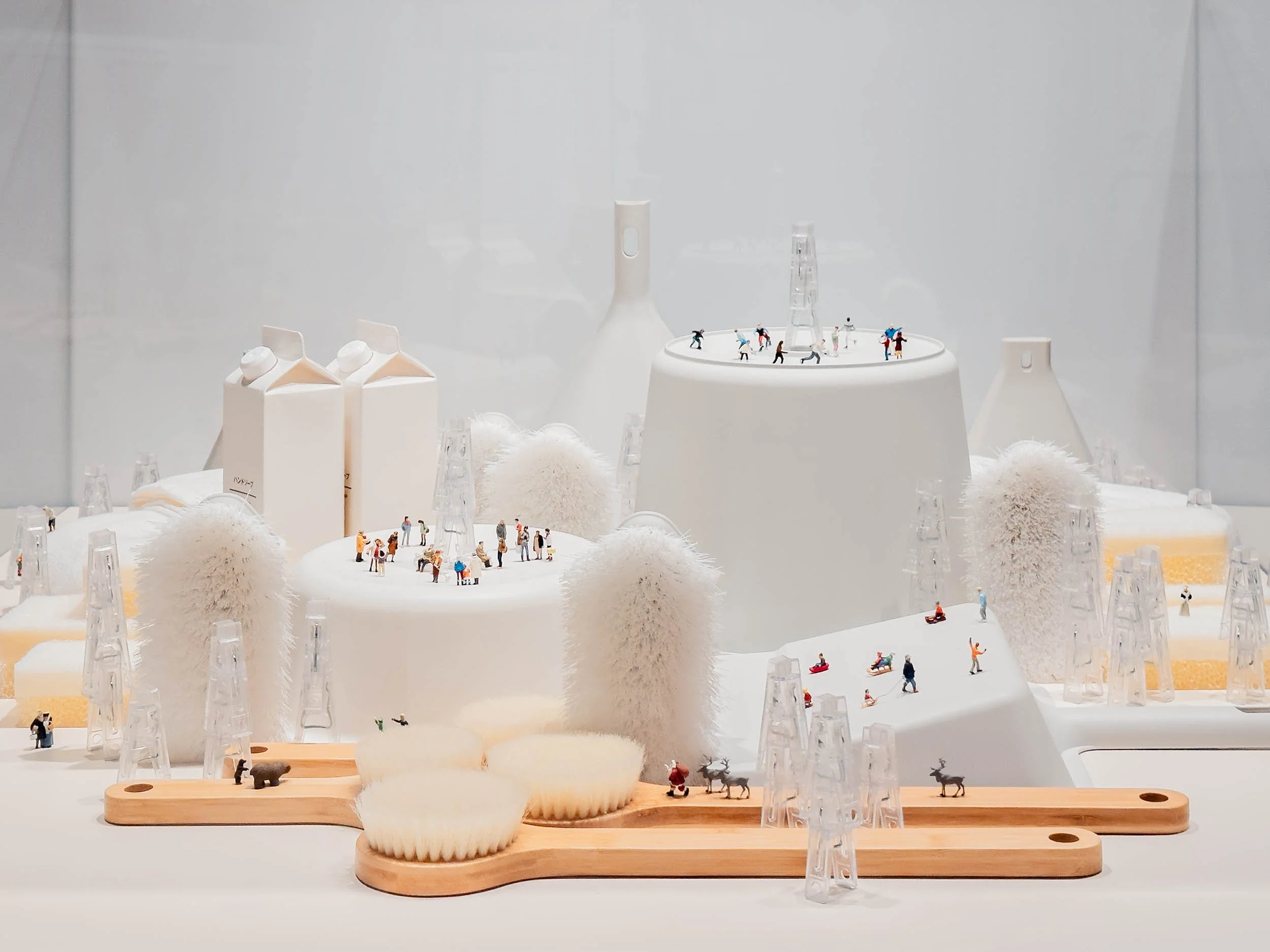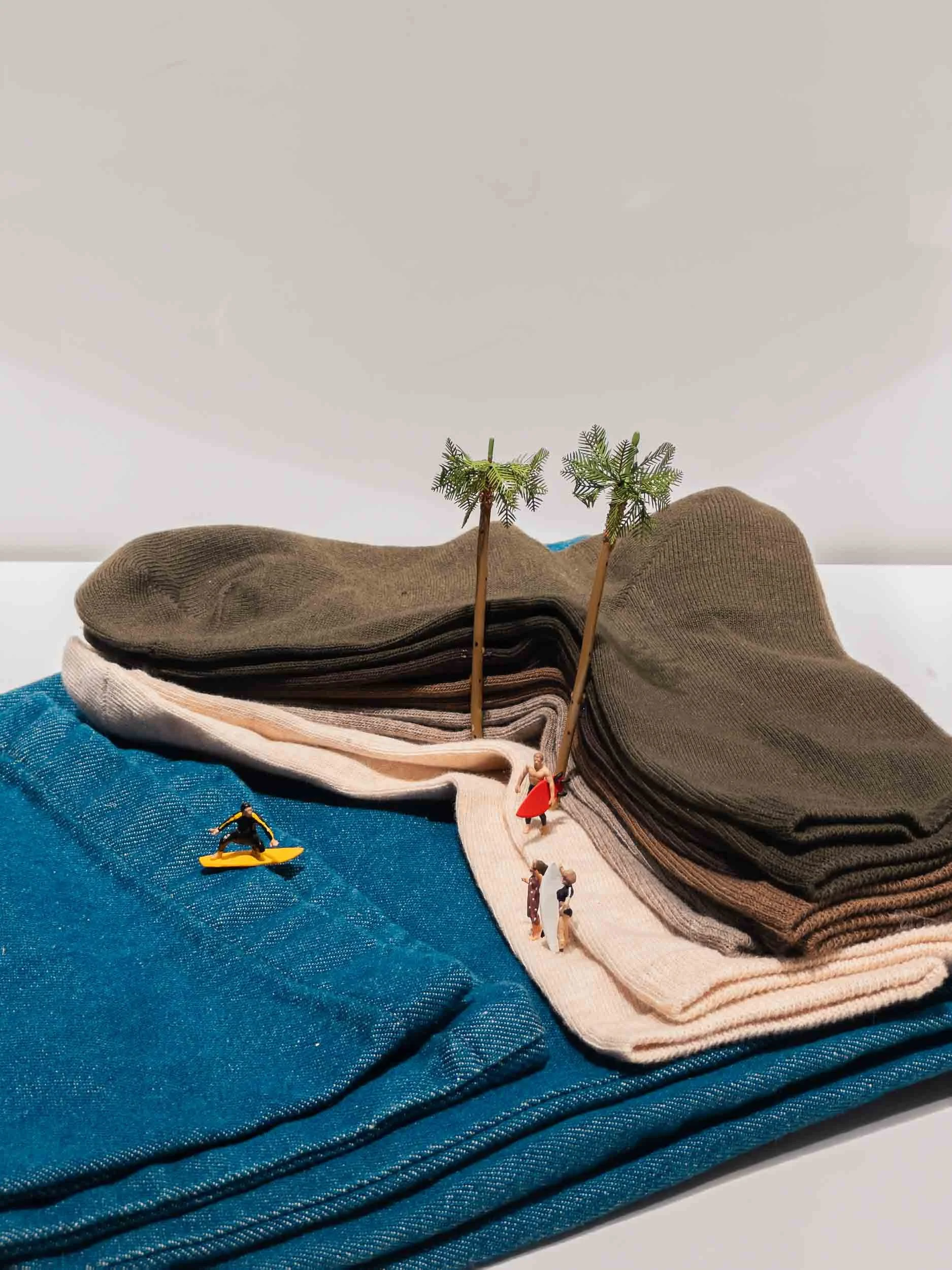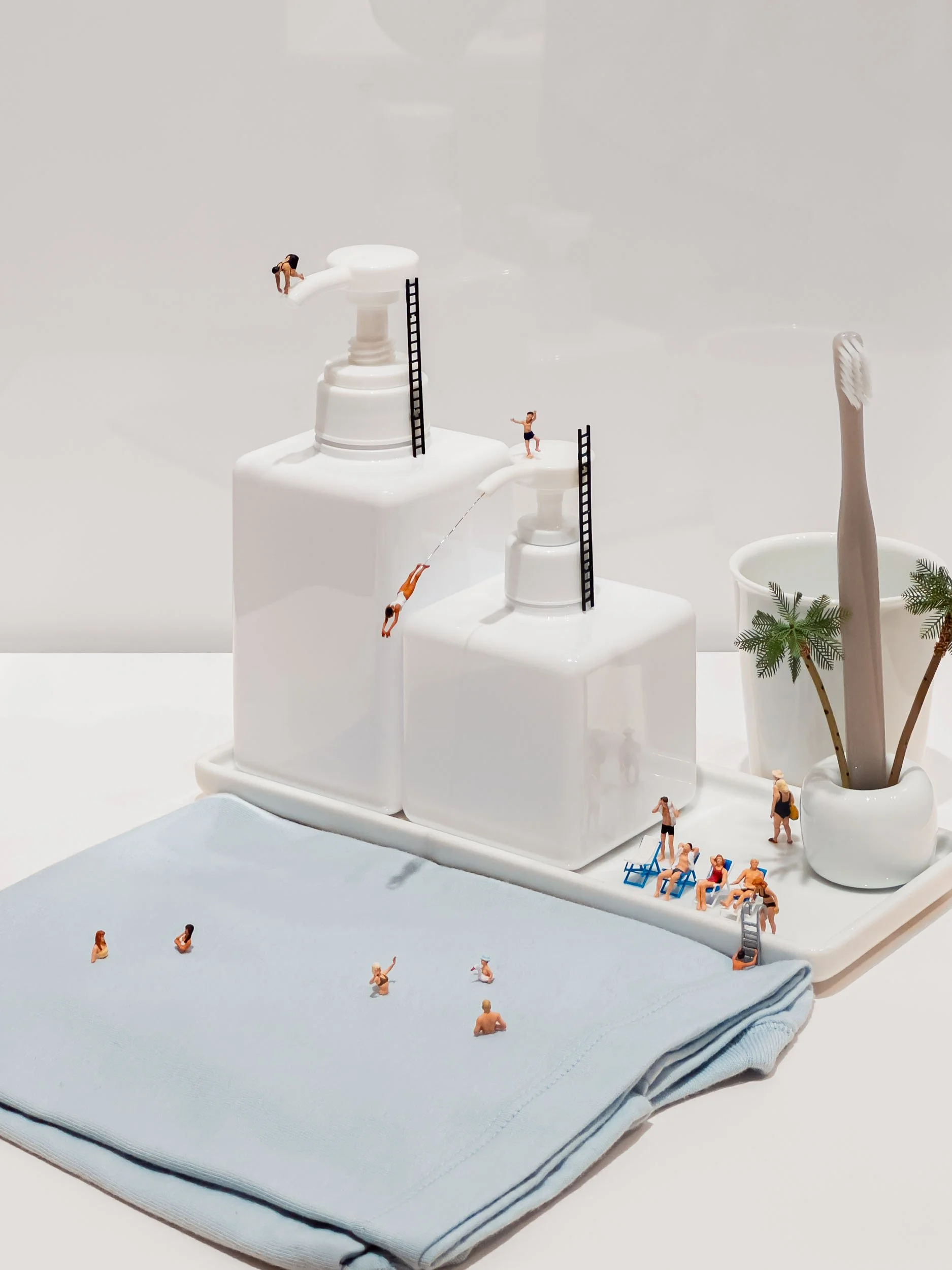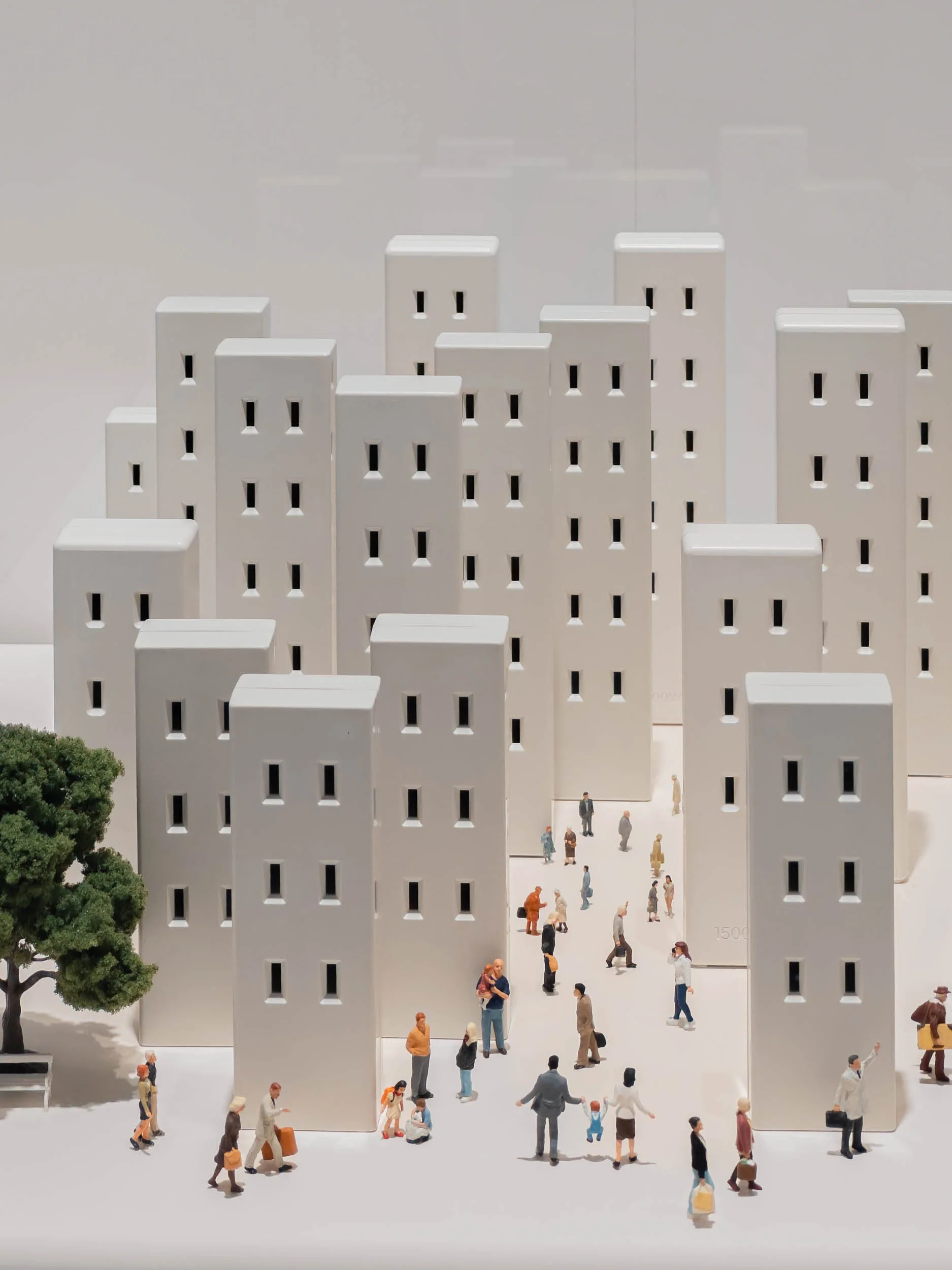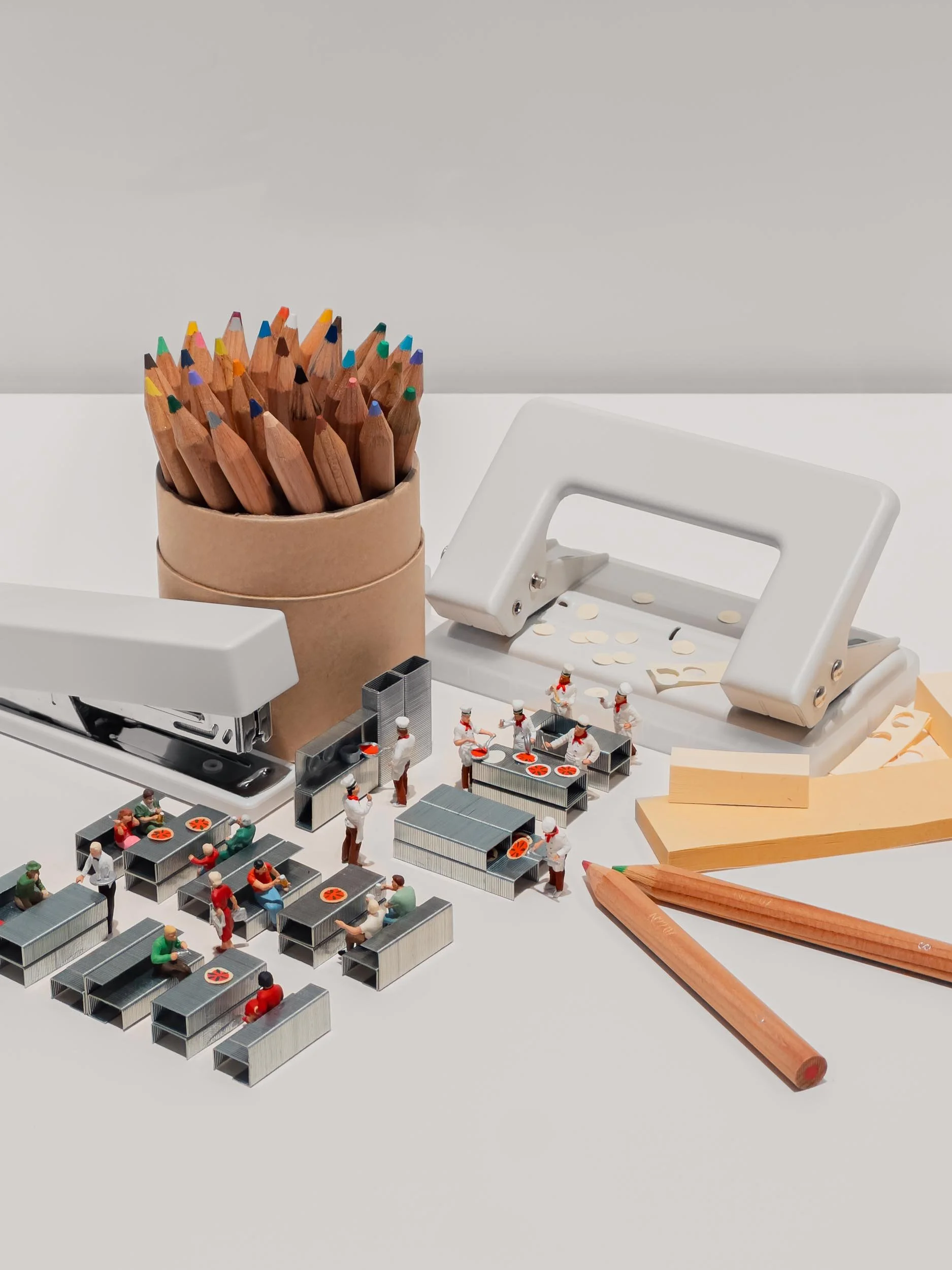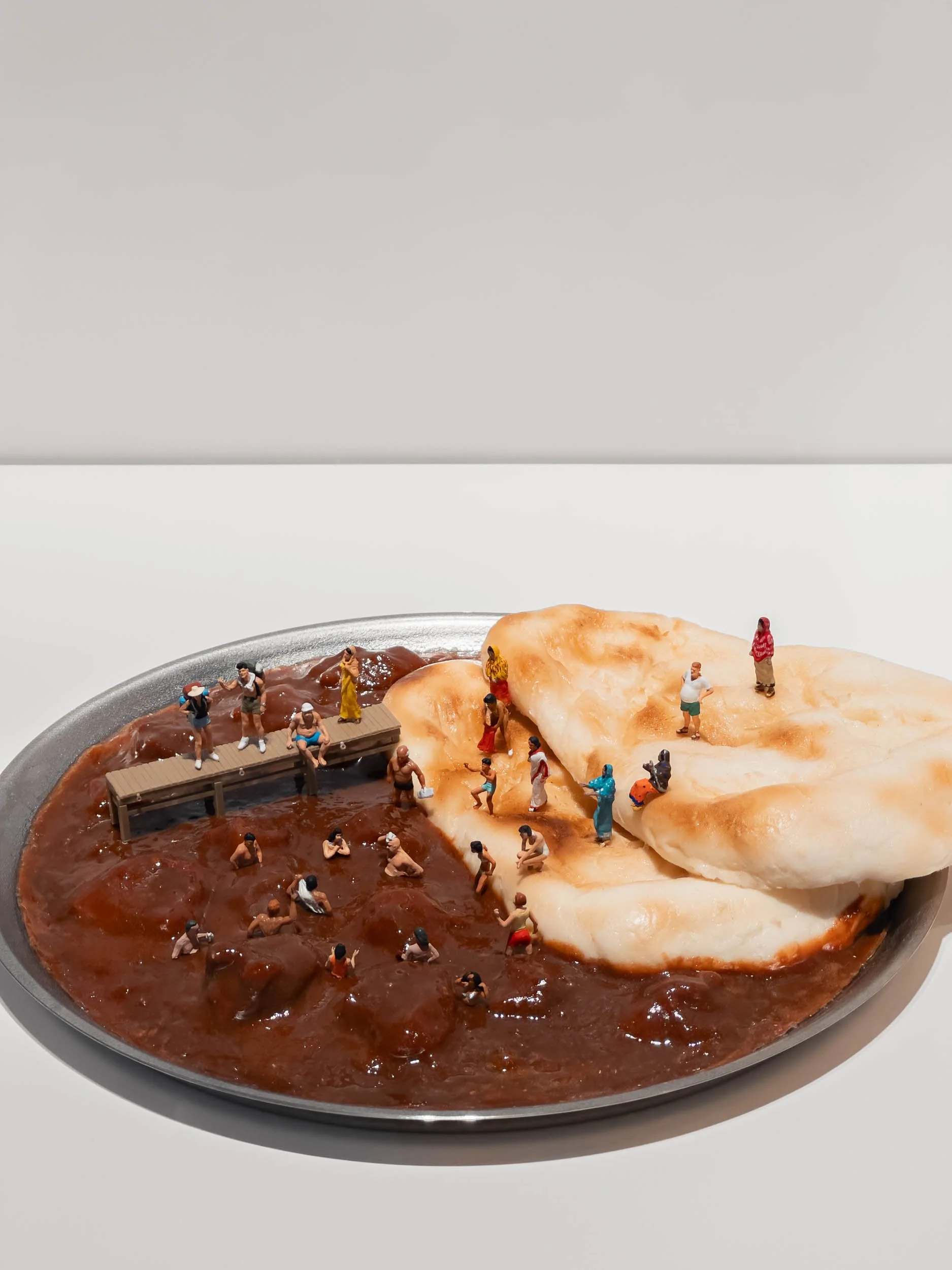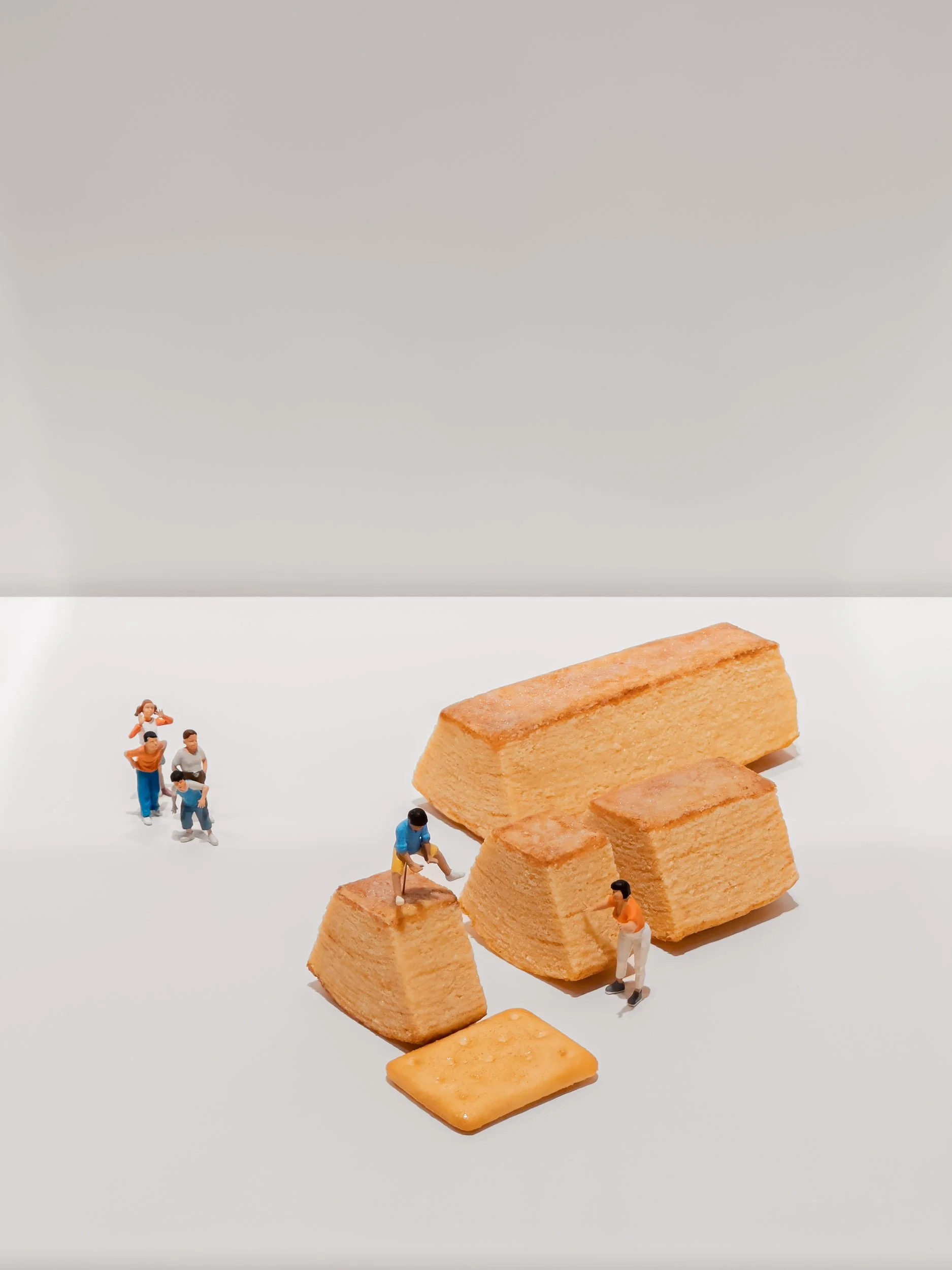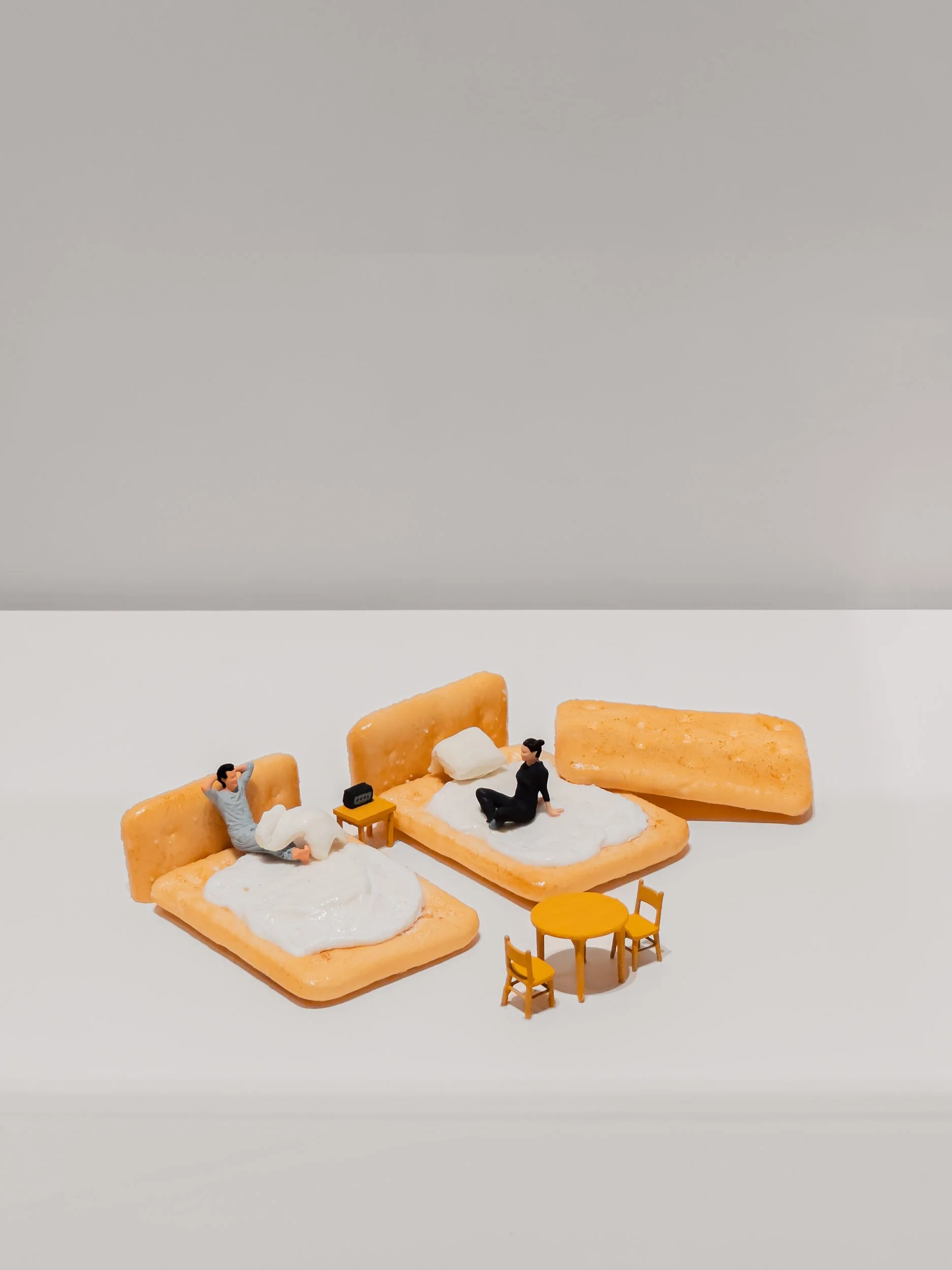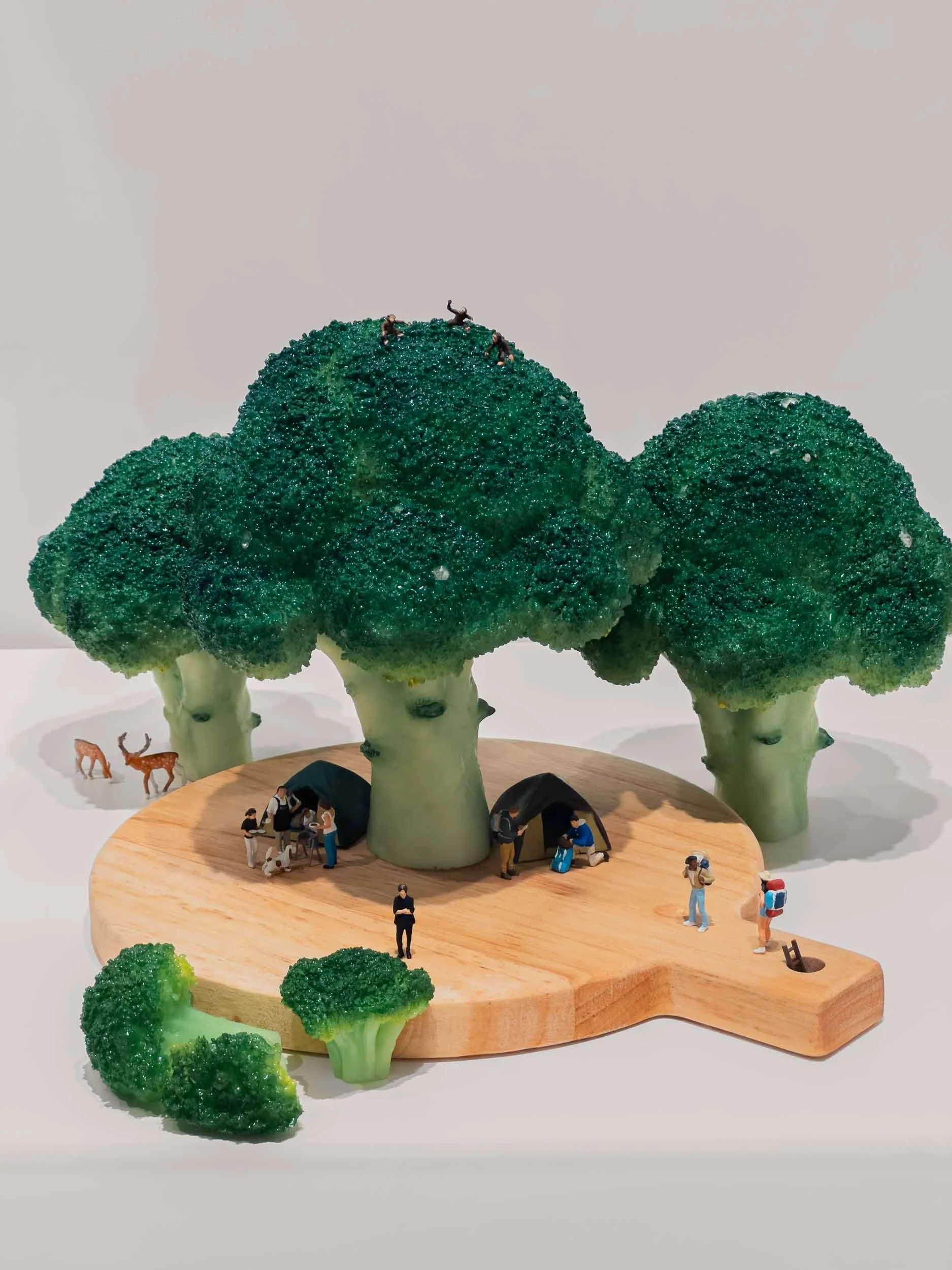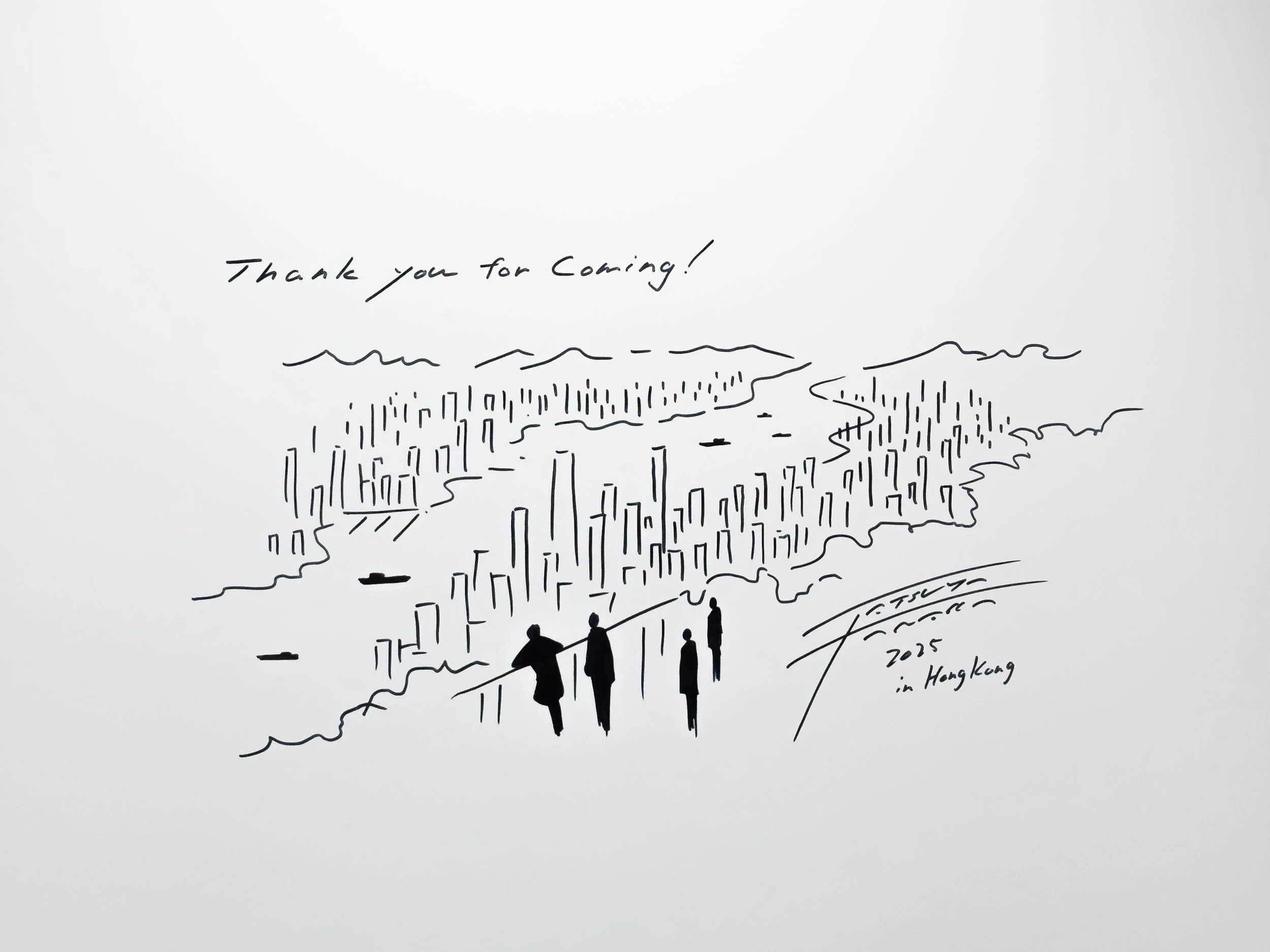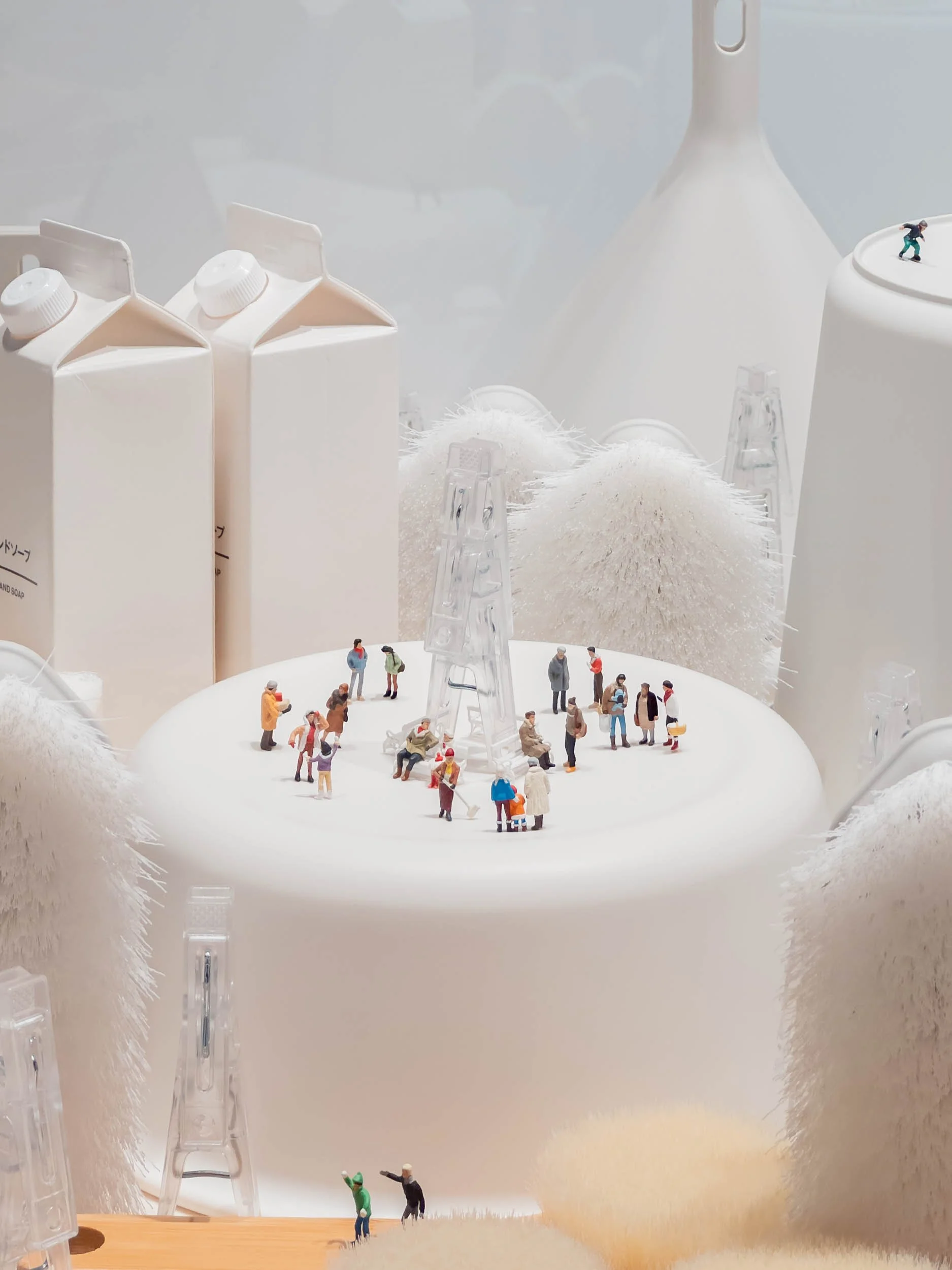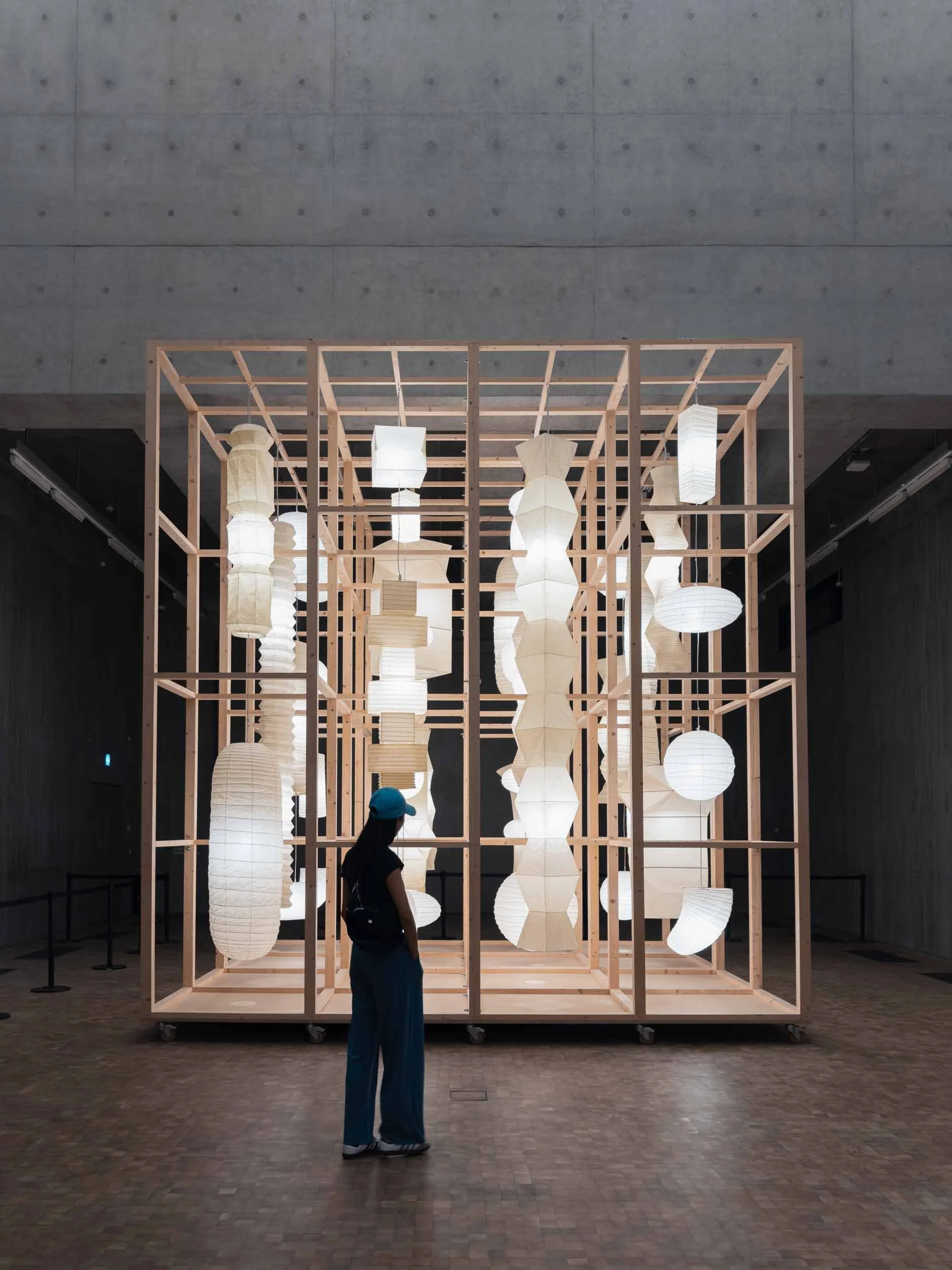small MUJI: Enjoying Everyday Items
What do you get when your favourite Japanese brand collaborates with your favourite Japanese artist? Pure magic, I’d say.
I was ecstatic when the news broke that MUJI, my forever-favourite for all things calm, clever and beautifully simple, was teaming up with Tatsuya Tanaka, the Japanese artist who first made me fall in love with miniature art. The idea of these two creative forces colliding felt like a dream: MUJI’s minimalist universe meets Tanaka’s playful, imaginative eye.
So naturally, small MUJI arriving at the Hong Kong and Macao flagship store gave an electric tingle of anticipation—something akin to rediscovering a childhood haunt, but with an artistic twist that leaves you both nostalgic and newly enchanted. I was all in, ready to be swept up in a whimsical celebration of the everyday.
MUJI: The Japanese Darling We Grew Up With
Ask any Hong Konger and they’ll tell you that Muji isn’t just a Japanese fad; it’s an emotional constant, a rite of passage. Perusing their stores guarantees a gentle nostalgia, a sense of returning to something essential and reassuring, whatever stage of life you’re in.
Growing up, Muji’s stationery was a badge of taste, a quiet rebellion against the garish and the over-designed. I still remember how my friends and I obsessed over those minimalist gel pens at school, even as we mourned their demise when they cruelly met the classroom floor. But as life became more complex, so did Muji’s role in it. Adulting introduced me to their impossibly tidy storage boxes, perfect for taming chaos into calm. Eventually, I found myself coveting their linen shirts and, most recently, developing a borderline unhealthy obsession with their socks—soft, durable, and understatedly chic, just like everything else Muji puts its name to.
Tatsuya Tanaka: The Miniature World’s Magician
As for Tatsuya Tanaka, he has been a quiet force in my creative orbit for years – in fact, he was one of the very first artists I followed on Instagram, back when curated feeds still felt like discovering secret galleries in your pocket. Born in Kumamoto, he is a master of mitate (見立て), the Japanese concept of likening, the art of seeing something not just for what it is but for what it might become.
Tanaka first launched his “Miniature Calendar” project in 2011, sharing daily scenes that reimagine the mundane as magical, a project that he continues to this very day. Scrolling through, you’ll notice a gentle humour that runs through his work. His scenes are never cynical but playful, even hopeful, a love letter to everyday life. It’s a reminder that art is already woven into facets of our lives, that creativity doesn’t require grand gestures; sometimes, it’s about seeing the world with fresh eyes and childlike wonder.
“Muji products harmonise perfectly with my artworks… their stackable, connectable, and interchangeable storage options facilitate effortless expansion to accommodate increasing materials. This scalable adaptability closely resembles the way I arrange and connect the ideas for my creations.”
In a way, his collaboration with Muji makes perfect sense. Muji’s understated forms leave room for interpretation, and Tanaka’s genius lies in filling that blank space with stories. As he puts it, there’s a poetry to how he organises chaos—both in his studio and in his art.
small MUJI: Where Everyday Magic Lives
3 October – 30 November 2025
The exhibition is much more than a display of miniatures—it’s a celebration of noticing, of slowing down, and of re-seeing the world through a lens of play. As the latest stop in a globe-trotting tour that’s charmed Ginza, Osaka, Singapore, New York and more, the Hong Kong edition brings its own distinct local flavour. What makes small MUJI so special is how every city gets its own set of dioramas, inspired by local icons and daily moments, all ingeniously built from Muji’s famously minimalist products. It’s not just about what’s on the shelves; it’s about how those objects, so familiar in our homes, can be transformed into scenes that are whimsical, poignant, and undeniably full of life.
The visual language of the exhibition is at once clever and deeply nostalgic. The aesthetics are pure Muji: clean lines, muted tones, and a quiet humour that sneaks up on you. It’s a world that feels intimate and recognisable, but also surprising at every turn. By observing, selecting, and likening, Tanaka and Muji invite us to play with meaning, to find the extraordinary in the ordinary. Each diorama is a nudge to look closer at our own lives and surroundings, to appreciate the blank spaces as much as the filled ones.
For Hong Kong, Tatsuya Tanaka has created two large-scale dioramas that are playful winks to the city’s urban landscape. The results are both universal and uniquely steeped in local detail, and there’s a delight in spotting the small, often overlooked things. As your gaze wanders amongst these tiny worlds, you can’t help but feel a sense of wonder—and maybe, just maybe, you’ll see your own full-sized reality with fresh eyes when you step back outside.
Little Big City (尺幅千里)
The star of the show is “Little Big City”, a loving, tongue-in-cheek tribute to Hong Kong’s iconic skyline and Victoria Harbour. Here, a scalp hair brush cleverly becomes the instantly recognisable Exhibition Centre, nail clippers transform into Star Ferries gliding across Victoria Harbour. And for a twist on perspective, tiny figures perched on the brush Peak gaze down at the miniature city below. The detail is exquisite, and the effect is both witty and strangely moving—it’s Hong Kong, but as you’ve never seen it before.
The Drawers of Life (抽屜式住宅)
Then there’s “The Drawers of Life”, a loving portrait that captures the city’s vibrant, everyday chaos. You see the humble orange cable holder stacked as rubbish bins, a nod to the city’s relentless energy and resourcefulness. Boxes become trams and open-top double-decker buses, while wire baskets transform into construction sites, complete with Hong Kong’s signature bamboo scaffolding. Tanaka also deliberately repurposed product labels as outdoor advertising signs, and planted seven miniature versions of the exhibition poster as easter eggs, encouraging visitors to really dig into the small details.
Both up close and from afar, each element feels perfectly observed, from the density of buildings to the quirks of street life. There’s an intimacy to these scenes that feels personal—the sort of inside joke that only locals will catch, and you get the sense that Tanaka has wandered Hong Kong’s alleys, notebook in hand, collecting fragments of the city’s soul and translating them in his signature, heartwarming language. It’s equal parts laughter and awe, as you realise even the most mundane objects can become vessels for storytelling and cultural memory. See anything you like? Time to go hunting around the flagship store for your favourite products to take home.
Related Posts

